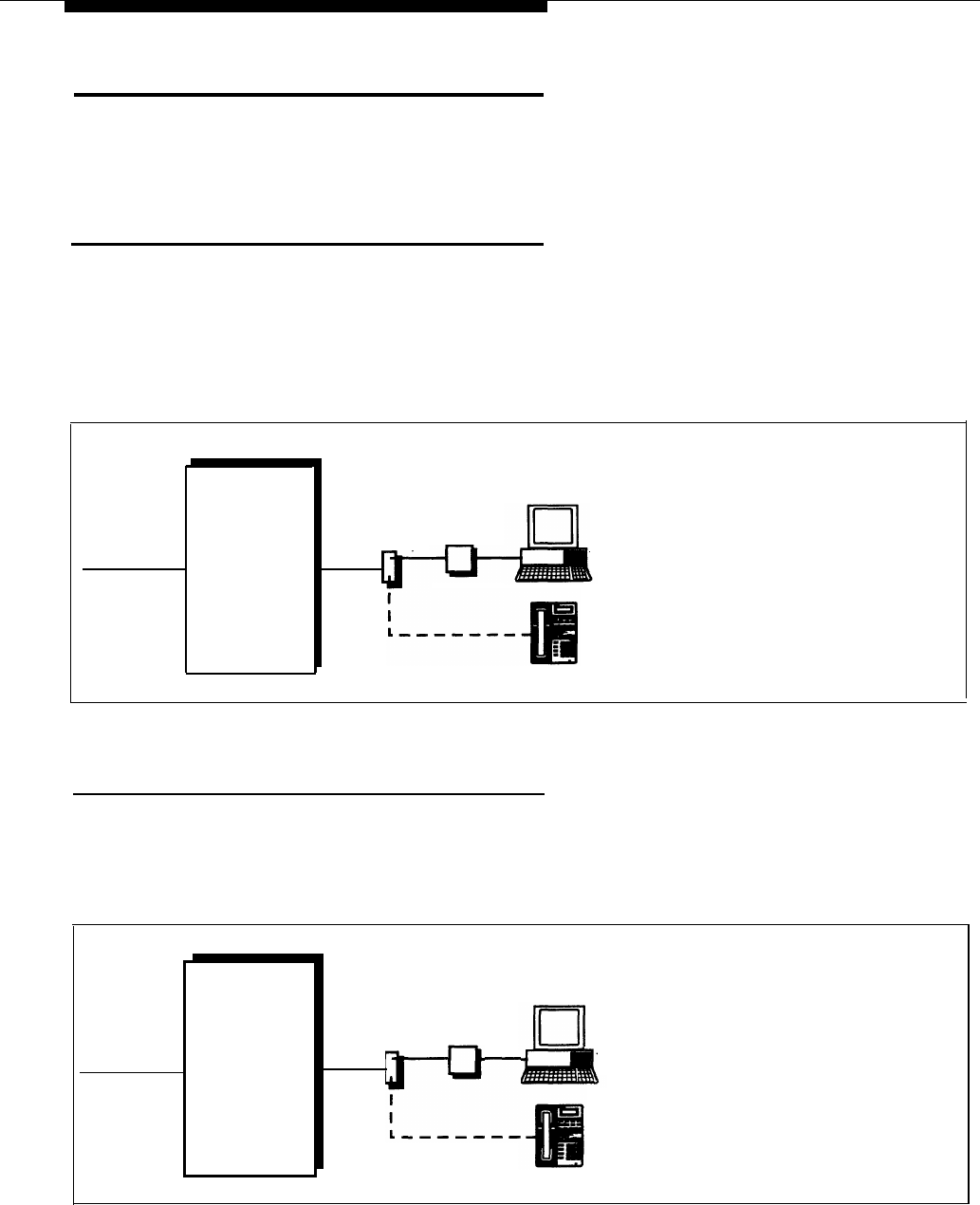
Modems
There are two ways to use modems with your premises equipment, as
described below. Modems can connect directly to an extension jack without an
adapter.
Modem for Placing Calls Only
A modem and a terminal allow you to dial out and connect to computer bulletin
boards and other data services. This setup, which lets you dial out but not
receive calls, is shown in Figure 7-4. Note that the 267F2 bridging adapter and
telephone are optional and can be used if you want the terminal to share an
extension with a phone.
To use the modem, follow the modem manufacturer’s instructions.
PC
Modem
or
Primary Line
EQUIPMENT
CONTROLLER
267F2
Bridging
Adapter
(optional)
Ext.
To Program:
1. If the primary line for extension jack X is
assigned to any other extension as a
secondary line, set Automatic Extension
Privacy (#304) for extension jack X to
“assigned.”
2. Remove extension jack X from all Calling
Groups (#502), all Pickup Groups
(#501), the Night Service Group (#504),
Terminal
Jack X
and all Hunt Groups (#505).
Telephone
3. Set Line Ringing for the line assigned to
(optional)
extension jack X to “no ring.”
4. Set the auto answer feature of the
modem to “off.”
Figure 7-4. Modem for Placing Calls Only
Send and Receive Modem
If you need to place and receive calls with the modem, use the setup shown in
Figure 7-5.
Calls to the modem line ring only at the device(s) connected to extension jack X.
To use the modem, follow the modem manufacturer’s instructions.
Primary Line
EQUIPMENT
CONTROLLER
267F2
To Program:
Bridging
PC
Adapter
Modem
(optional)
or
Terminal
Ext.
1. Assign only a primary line to extension
jack X. If necessary, use Line Assignment
(#301) to remove any secondary lines.
2. Make sure Line Ringing for the primary
line at extension jack X is set to
Jack X
“immediate ring.”
Telephone
(optional)
Figure 7-5. Send and Receive Modem
7-6
Using Auxiliary Equipment
